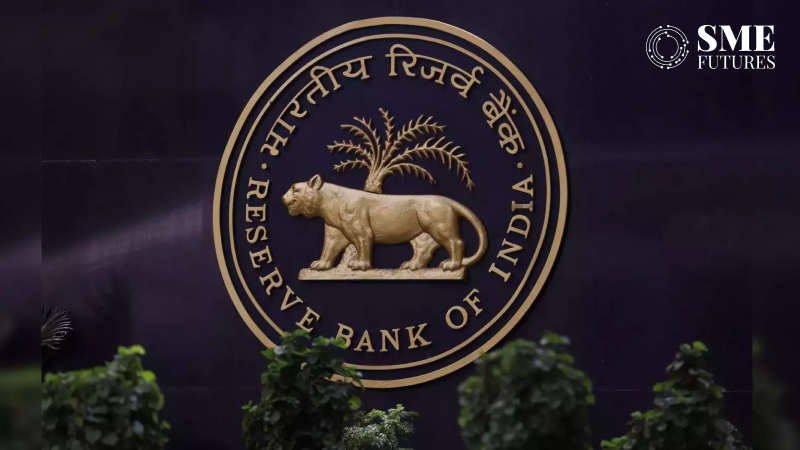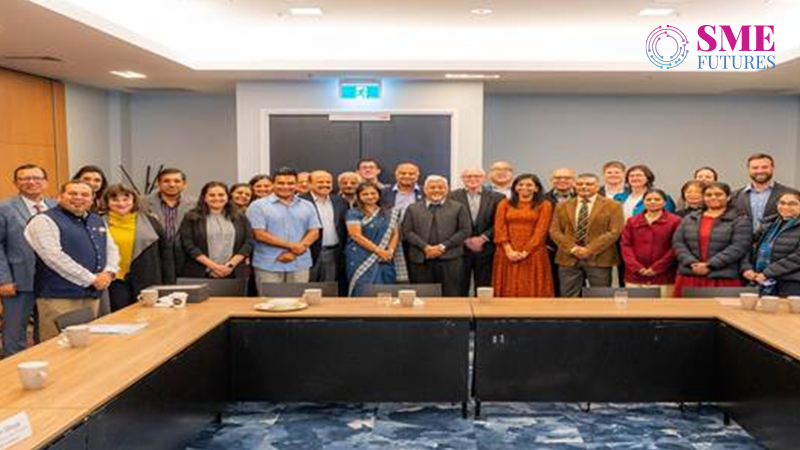Government regulations to make business easy, not to establish license raj again: Swati Gupta, industrybuying.com
An entire B2B transaction can now be completed online, from sourcing to invoicing to credit to e-way, and even tax filing. Swati Gupta, Co-founder of industrybuying.com, sheds some more light on the latest advances in this field
Bhoomika Singh August 28, 2023

MORE IN Interviews
Navigating the path to e-commerce success: Insights from trade policy expert
RegTech solutions can be a game changer in fintech regulatory scrutiny
From slum to CEO and now ‘Seema Aunty’ of Indian start-ups: Rahul Narvekar, The India Network
A parallel revolution is quietly transforming India’s business-to-business (B2B) scene in the dynamic arena of e-commerce. According to government figures, India has added 125 million online shoppers in the last three years, with an additional 80 million predicted to join by 2025.
The Indian B2B online marketplace industry has emerged as a force to be reckoned with because of increased digitization and intensive internet penetration. According to Bessemer Venture Partners, B2B marketplaces will drive the next phase of growth in India’s digital economy, with India’s online B2B marketplaces expected to reach US$ 200 billion in Gross Merchandise Value (GMV) by 2030.
When it comes to the Indian e-commerce B2B sector, it has been an incredible journey, propelled by the convergence of technology, changing business conditions, and transforming attitudes. According to IBEF, the global e-commerce sector is predicted to reach US$ 350 billion by 2030, with a 21.5 per cent increase in 2022 to reach US$ 74.8 billion.
Also, the Indian online grocery industry is expected to reach US$ 26.93 billion in 2027, up from US$ 3.95 billion in FY21, at a CAGR of 33 per cent. This dramatic development can be ascribed to the growing use of digital platforms by firms in a variety of industries to access raw materials, equipment, and other industrial supplies smoothly and more efficiently.
Amidst this transformative backdrop, industrybuying.com, an e-commerce platform specialising in industrial and Maintenance, Repair, and Operations (MRO) supplies, has emerged as a trailblazer. In an exclusive interview with Swati Gupta, the Co-founder of Industrybuying, we dive into the intricacies of the B2B e-commerce landscape, the journey of Industrybuying, and the profound implications of this digital evolution on India’s industrial fabric.
Edited excerpts:
Bessemer Venture Partners’ new estimate expects India’s online B2B marketplaces to reach $200 billion in GMV by 2030. How do you envision this expansion affecting your platform?
As India’s leading product marketplace e-commerce platform for industrial and MRO supplies, we are seeing this type of growth trends emerge in our metrics. Our app downloads have hit 1 million plus on android alone, customers are seeking to move more of the basket share to our platform and repeat and retention rates are also increasing. However, we are still at the very initial stages of the B2B opportunity. Over the next 2-5 years as ONDC and OCEN scale up, we should be able to leverage their growth, and scale up more rapidly.
As the report points out, the trends are very favourable towards the continuing growth of B2B platforms – ONDC, TREDS, Eway bill and now e-invoicing will make massive amounts of the transaction ecosystem digitalized, and B2B platforms can piggyback on this digitalization. Further, growth cross-category and cross-sectors is also possible as platforms mature and grow and invest more.
What are the strategies that industrybuying.com implements to capitalise on this market opportunity and maintain its position in the space?
At industrybuying, we are very product and supply chain focused. Our priorities are simple – have the largest assortment at the best price, have a superior supply chain network including warehouses to achieve good service levels, and have strict profitability and balance sheet boundaries in place to create high-quality growth. This is where we are investing to build on our position.
On the product side, we are aiming to have at least 2,000,000 products online by the end of this year from domestic brands. We are also launching a complete range of MonotarRO Japan products that have the highest quality at very competitive pricing to offer the first Japanese products platform in India. Our goal is to have at least 10 million products over the next 2-3 years that cover the entire industrial and SME business catalogue.
How is the B2B industry streamlining its supply chain and delivery operations to ensure timely and effective product deliveries to clients across the country?
Having a warehouse network is crucial for satisfying a B2B customer’s delivery expectations – once you have the right products stocked across the right regions, customer service becomes efficient since delivery SLAs are high and delivery time is quick. Further, technological automation across the entire chain – from invoice to e-way to tracking to reverse logistics – helps to improve the supply chain.
The B2B industry is taking several steps to improve the supply chain. A couple of examples are:
Technology Integration: Indian supply chain companies are increasingly adopting technology solutions such as advanced analytics, Internet of Things (IoT) devices, and artificial intelligence to gain real-time insights into their operations. These technologies enabled better tracking of shipments, demand forecasting, route optimization, and inventory management.
Warehouse Modernisation: Modern warehouses equipped with automation and robotics are becoming more common. These technologies allow for faster order processing, reduced manual errors, and improved inventory management.
How is the B2B Industry preparing for potential regulatory changes and for ensuring compliance with industry standards?
The regulatory environment is actually quite favourable for B2B marketplaces right now – ONDC, OCEN, and the governments’ other digital efforts such as the rupee, GST automation, etc., have the potential to truly streamline something that has traditionally been very complex. For example, today it is possible to do an entire B2B transaction from sourcing to invoicing to credit to e-way to delivery to GST and tax filing, entirely online. With increased integrations and automation, compliance also becomes more streamlined.
The core assumption here is that the government’s regulations are being developed to make business easy and to spur the manufacturing and other sectors, not to establish a license raj again. Under that assumption, B2B platforms can list on ONDC, OECN, and TREDs and develop automation to fulfil compliances on all these platforms. They can also leverage internal software development or use third party providers to very quickly integrate their data systems to be fully compliant with the requirements, unlike traditional non digital traders and distributors.
What initiatives is industrybuying taking to empower SMEs and help them to navigate the digital landscape effectively?
Our platform is our initiative, on which SMEs can find all the products that they need, can avail themselves of credit and other payment services, and can get delivery quickly. Also, we are launching Japanese industrial products from our parent MonotarRO Japan and will also launch an American product line from WW Grainger sometime this year.
Further, our catalogues help our SME customers to understand the various product options that they can buy online, and our user-friendly interface is easy to navigate even for the non-tech savvy. We are also investing in localised language support to bring more and more SMEs online.
The pandemic has already set the narrative of omnichannel presence. How are B2B companies adopting the trend and what is its influence on the e-commerce market?
The pandemic has hugely increased digital awareness among SMEs. For us there has been no looking back after the pandemic – it has been onwards and forward for the entire sector. The pandemic made a permanent change in how the world looks at B2B commerce. However, now further and newer trends are replacing the pandemic in sustaining the momentum and in driving this growth.











